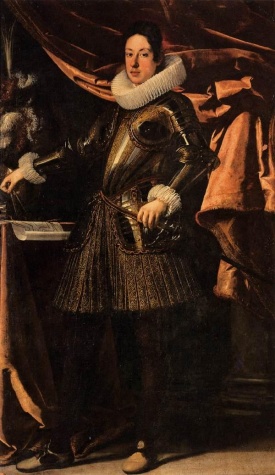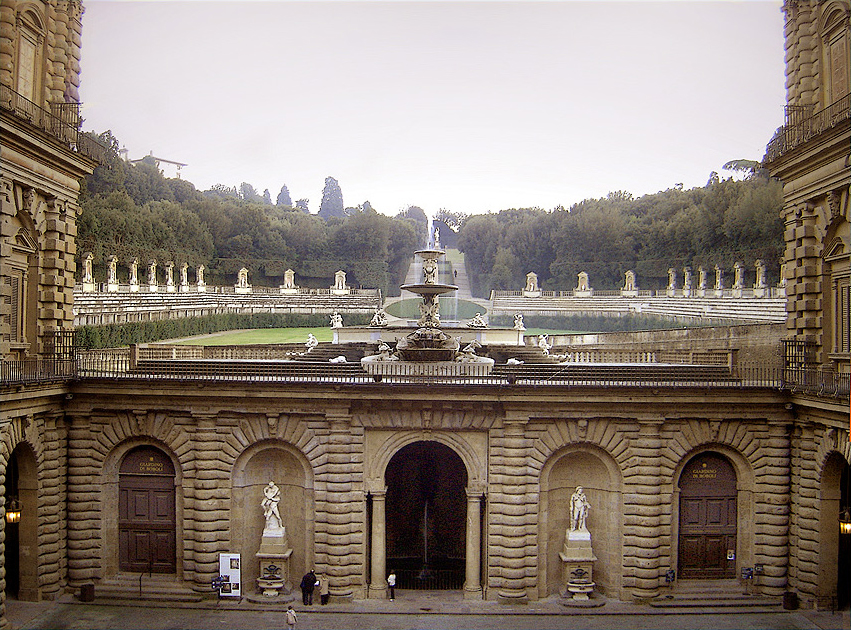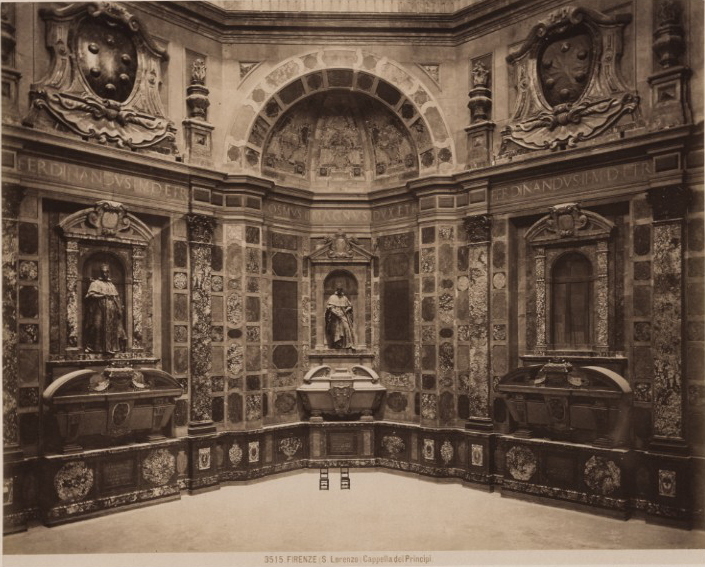
Ferdinando II de’ Medici, Grand Duke of Tuscany (1610-1670) was the son of Cosimo II de’ Medici.
His father’s death marked the start of a long regency that extended beyond Ferdinando’s majority. The regency was conservative in all aspects of governance and continued to patronize Tuscan artists who had been supported by Cosimo II.
From 1621 to 1630 there was little artistic activity at the court apart from theatre spectacles, for which scenery was designed by Giulio Parigi and his son Alfonso the younger.
Successive plague epidemics (1631–1633) and economic depression in the linen and wool industries provoked a vigorous response from the young Grand Duke: a dole and a government-supported public works program were established, the latter including construction of the Monte Reggi aqueduct and the installation of new public fountains.
In addition the Palazzo Pitti was expanded from a 7-to a 23-bay façade, the Boboli Gardens were reorganized and an amphitheater built.

Most of this program (largely completed in the 1640s) was stylistically conservative. The enlargement of the palazzo, under the Parigi family, repeated the original Quattrocento façade design; the amphitheater has frequently been mistaken for a Cinquecento construction. The Moses Grotto in the Palazzo Pitti courtyard received sculpture by Antonio Novelli, Giovanni Battista Pieratti, Domenico Pieratti, Raffaello Curradi and Cosimo Salvestrini. Above the grotto the Artichoke Fountain, in the traditional candelabrum form, by Francesco Susini was installed. Two monumental sculptures originally commissioned from Giambologna were adapted (the Dovizia, which was recut by Pietro Tacca) and repositioned (the Ocean Fountain) in the garden in 1637.
New fountains in the city included two sea monster fountains originally planned for Livorno by Tacca but installed in the Piazza SS Annunziata; Tacca’s Porcellino, modeled from an antique sculpture and installed in the Mercato Nuovo; and an antique sculpture group of Menelaus and Patroclus used to mark a fountain head at the Ponte Vecchio. Tacca also made two monumental statues of Grand Dukes Cosimo II and Ferdinando I for the Cappella dei Principi, begun in 1626 but not completed until 1644, under Pietro’s son, Ferdinando Tacca.
In painting a conservative patronage pattern obtained until the late 1630s. At the Palazzo Pitti, Matteo Rosselli worked with Giovanni da San Giovanni, who was commissioned to fresco the public rooms of the summer apartments in his highly informal style.
However, on Giovanni’s death (1636), the room he had partially completed was programmatically revised and turned over to younger Florentine artists: Francesco Furini, Cecco Bravo and Ottavio Vannini. Thereafter Florentine artists were employed in secondary areas of the palace, and the completion of the summer apartment decorations was assigned to the internationally fashionable Bolognese quadrature specialists Angelo Michele Colonna and Agostino Stanzani Mitelli.
The decoration of the public rooms on the piano nobile was given to the Rome-based Tuscan artist Pietro da Cortona and subsequently completed by his pupil Ciro Ferri. The work of these artists brought the Roman High Baroque to Florence and had a profound influence on Florentine art, notably that of Stefano della Bella and Baldassare Franceschini, both patronized by Ferdinando II; but several artists were unaffected by the intrusion of the Roman Baroque, notably the Grand Duke’s portrait painter, Giusto Suttermans, whose style was Rubensian, and Carlo Dolci, who continued to produce portraits and religious paintings in his painstakingly brilliant manner.
During Ferdinando’s reign the efforts of Florentine architects and sculptors were heavily invested in the Cappella dei Principi at San Lorenzo, a project initiated in 1604. The public works projects of 1630–1640 and the War of Castro (1641–1644) exhausted the grand-ducal treasury and curtailed other large-scale projects.

